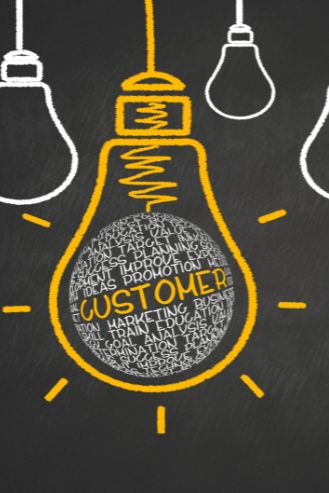
How to Build Customer Data Platforms: A Comprehensive Guide
Building customer data platforms has become essential for businesses seeking to unify their customer information and deliver personalized experiences across all touchpoints. In today’s data-driven marketplace, organizations face the challenge of managing customer data scattered across multiple systems, applications, and departments. A Customer Data Platform (CDP) serves as a centralized hub that collects, processes, and activates customer data from various sources, enabling businesses to create a single, comprehensive view of each customer.
The importance of implementing a robust CDP cannot be overstated in the current business landscape. Companies that successfully build and deploy customer data platforms gain significant competitive advantages through improved customer insights, enhanced personalization capabilities, and more effective marketing campaigns. This comprehensive guide will walk you through the essential steps, best practices, and considerations for building a customer data platform that meets your organization’s unique needs.

Understanding Customer Data Platforms
A Customer Data Platform is a packaged software solution that creates a persistent, unified customer database accessible to other systems. Unlike traditional data management solutions, CDPs are specifically designed to collect and unify first-party customer data from multiple sources, including websites, mobile applications, CRM systems, email platforms, and offline interactions. This unified data creates comprehensive customer profiles that can be activated across various marketing and customer experience channels.
The key differentiator of CDPs from other data management solutions lies in their ability to create real-time, actionable customer profiles. While data warehouses focus on storage and analytics, and CRM systems manage customer interactions, CDPs bridge the gap by providing a unified platform for predictive analytics and immediate activation of customer insights. This capability enables marketers and customer experience teams to deliver personalized experiences at scale without requiring extensive technical expertise.
Key Components of a Customer Data Platform
1. Data Collection and Integration Layer
The foundation of any CDP is its ability to collect data from diverse sources. This includes implementing APIs, webhooks, SDKs, and batch processing capabilities to ingest data from various touchpoints. The integration layer must be flexible enough to accommodate structured and unstructured data while maintaining data quality and consistency.
2. Identity Resolution Engine
Identity resolution is crucial for creating unified customer profiles. This component matches and merges customer data from different sources using deterministic and probabilistic matching techniques. It handles challenges such as duplicate records, incomplete data, and cross-device tracking to ensure accurate customer identification.
3. Data Storage and Processing Infrastructure
CDPs require robust storage solutions capable of handling large volumes of data while maintaining performance. This typically involves implementing cloud-based data lakes or warehouses with appropriate indexing and partitioning strategies to ensure quick data retrieval and processing.
4. Profile Unification and Enrichment
Once data is collected and identities are resolved, the CDP must create comprehensive customer profiles. This involves aggregating behavioral data, transaction history, preferences, and demographic information into a single, accessible view that can be continuously updated in real-time.
Step-by-Step Guide to Building Your CDP
Step 1: Define Your Objectives and Use Cases
Before beginning the technical implementation, clearly define what you want to achieve with your CDP. Common objectives include improving customer segmentation, enabling real-time personalization, increasing marketing ROI, and enhancing customer lifetime value. Document specific use cases that align with your business goals to guide the development process.
Step 2: Audit Your Current Data Landscape
Conduct a comprehensive audit of your existing data sources, including:
- Customer relationship management (CRM) systems
- E-commerce platforms and transaction databases
- Website and mobile app analytics tools
- Email marketing platforms
- Social media engagement data
- Customer service and support systems
- Offline data sources such as point-of-sale systems
Step 3: Design Your Data Architecture
Create a detailed architecture plan that outlines how data will flow through your CDP. This should include data ingestion methods, processing pipelines, storage strategies, and integration points with downstream systems. Consider factors such as data volume, velocity, and variety when designing your architecture.
Step 4: Implement Data Collection Mechanisms
Deploy the necessary tools and technologies to collect data from identified sources. This may involve:
- Installing JavaScript tags or SDKs on websites and mobile apps
- Setting up API connections with third-party platforms
- Configuring webhook endpoints for real-time data streaming
- Establishing batch processing jobs for historical data imports
- Implementing data quality checks and validation rules
Step 5: Build Identity Resolution Capabilities
Develop algorithms and rules for matching customer records across different data sources. This involves creating a hierarchy of identifiers (email addresses, phone numbers, device IDs) and establishing confidence thresholds for matching. Consider implementing machine learning models to improve matching accuracy over time.
Step 6: Create Unified Customer Profiles
Design the structure of your unified customer profiles, including which attributes to include and how to organize the data. Implement processes for continuous profile updates and ensure that profiles can be accessed and activated across different channels and systems.
Best Practices for CDP Implementation
Ensure Data Privacy and Compliance
Building customer data platforms requires strict adherence to data privacy regulations such as GDPR, CCPA, and other regional laws. Implement robust consent management systems, data encryption, access controls, and audit trails. Provide customers with transparency about data collection and usage, along with easy mechanisms to exercise their privacy rights.
Focus on Data Quality
The value of your CDP depends on the quality of data it contains. Implement data validation rules, deduplication processes, and regular data cleansing routines. Monitor data quality metrics and establish governance procedures to maintain high standards over time.
Plan for Scalability
Design your CDP architecture to handle growing data volumes and increasing complexity. Use cloud-native technologies that can scale horizontally, implement efficient data partitioning strategies, and optimize query performance through appropriate indexing and caching mechanisms.
Enable Real-Time Processing
Modern customer experiences require real-time data processing capabilities. Implement stream processing technologies to handle real-time data ingestion and profile updates. This enables immediate response to customer actions and supports dynamic personalization across channels.
Integration with Marketing and Analytics Tools
A CDP’s value is realized through its integrations with downstream systems. Establish connections with marketing automation platforms, email service providers, advertising platforms, and analytics tools. Create APIs and data export mechanisms that allow these systems to access unified customer profiles and segments.
Consider implementing a comprehensive approach to data activation that enables marketers to easily create and deploy customer segments across multiple channels. This includes building user-friendly interfaces for segment creation, campaign activation, and performance monitoring.
Measuring Success and Optimization
Establish key performance indicators (KPIs) to measure the success of your CDP implementation. Common metrics include:
- Data completeness and accuracy rates
- Identity resolution match rates
- Profile enrichment levels
- System performance and latency metrics
- User adoption and engagement rates
- Business impact metrics such as conversion rates and customer lifetime value
Regularly review these metrics and optimize your CDP based on insights gained. Implement A/B testing capabilities to measure the impact of different personalization strategies and continuously refine your approach.
Common Challenges and Solutions
Data Silos and Integration Complexity
Many organizations struggle with data trapped in departmental silos. Address this by establishing cross-functional teams, implementing standardized data formats, and creating clear data governance policies that encourage data sharing while maintaining security.
Technical Expertise Requirements
Building a CDP requires diverse technical skills. Consider partnering with experienced vendors or consultants, investing in team training, and adopting low-code/no-code solutions where appropriate to reduce technical barriers.
Change Management
Successful CDP implementation requires organizational change. Develop comprehensive training programs, communicate the benefits clearly to all stakeholders, and provide ongoing support to ensure smooth adoption across teams.
Future Trends in Customer Data Platforms
The CDP landscape continues to evolve with emerging technologies and changing customer expectations. Key trends include the integration of artificial intelligence for predictive analytics, enhanced privacy-preserving technologies, edge computing for real-time processing, and improved cross-channel orchestration capabilities.
Organizations building customer data platforms today should design flexible architectures that can adapt to these evolving trends while maintaining focus on delivering immediate business value through improved customer experiences and marketing effectiveness.
Conclusion
Building customer data platforms represents a significant investment in your organization’s data infrastructure and customer experience capabilities. By following the comprehensive approach outlined in this guide, businesses can create powerful CDPs that unify customer data, enable personalization at scale, and drive measurable business results. Success requires careful planning, robust technical implementation, and ongoing optimization based on performance metrics and evolving business needs.
As customer expectations continue to rise and data privacy regulations become more stringent, having a well-designed CDP becomes increasingly critical for competitive advantage. Organizations that invest in building comprehensive customer data platforms today will be better positioned to deliver the personalized, relevant experiences that customers demand while maintaining compliance with data protection requirements.


